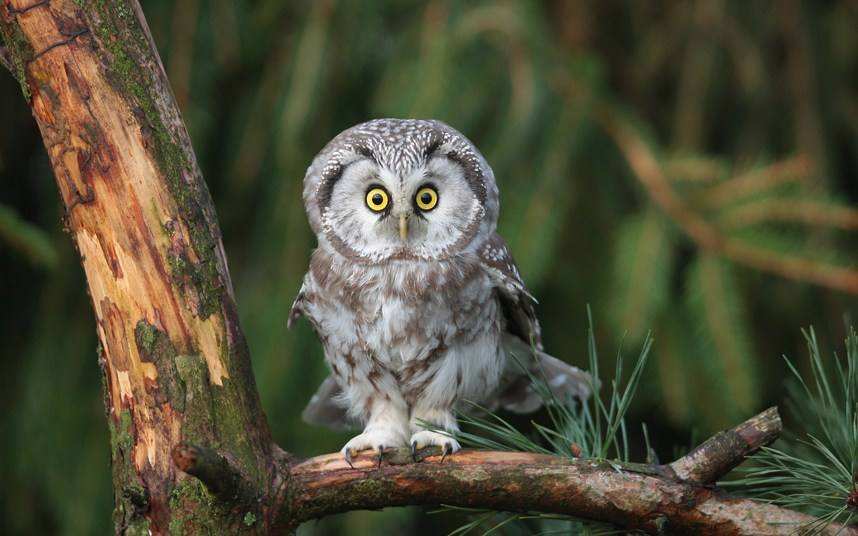Aegolius funereus
IUCN
LCBasic Information
Scientific classification
- name:Aegolius funereus
- Scientific Name:Aegolius funereus,Tengmalm's owl,Little Owl
- Outline:Raptor
- Family:Strigiformes Owl
Vital signs
- length:23-26cm
- Weight:About 130g
- lifetime:5-15years
Feature
The sound is like a flute, changing constantly, and sounds eerie and scary.
Distribution and Habitat
Distributed in Europe, Russia, Mongolia, Central Asia, Hokkaido, Japan, Alaska and Canada in the United States.
Harbin, Maoershan, Daxinganling, Huma, Tongjiang, Xingkai Lake, Mudanjiang, Jiamusi, Yichun and Heihe in Heilongjiang, China, Tiantangsi in northwest Gansu, Tianshan, Yili, Yuldus Basin in Xinjiang, Nanping in Sichuan, are all resident birds. Wintering in almost all parts of China.
Mainly inhabit coniferous forests and mixed coniferous and broad-leaved forests, especially mixed forests dominated by pine, birch and poplar. It is nocturnal and hides in dense forests with few people during the day. It often inhabits dense branches and leaves in the canopy or in tree holes.
Appearance
The ghost owl has a large head, a prominent facial plate, and is white. The eyes and eyebrow lines are also white, and there is a small black spot in front of the eyes. However, it does not have ear feather tufts, unlike the long-eared owl and short-eared owl. The upper body is chocolate brown to gray brown. The top of the head is densely covered with white spots, and there are large white spots on the back and shoulders. The underparts are white with brown markings. The flight feathers and tail feathers are dark brown with white spots or horizontal spots. The tail feathers are also brown with 5 pairs of white spots on the outer edge. Mouth and eyes yellow. The tarsometatarsus and toes are covered with white feathers. The iris is yellow, the mouth is light yellow, the claws are yellow, and the tips are black.
Size measurements: weight ♂130 g; body length ♂240 mm; bill peak ♂14 mm, ♀15.5 mm; wings ♂170 mm, ♀175 mm; tail ♂111 mm, ♀112 mm; tarsus ♂22 mm, ♀24 mm. (Note: male——♂; female—
Details
The foreign name of the ghost owl is Tengmalm's owl, and there are 6 subspecies.

Ghost owls mostly move alone and do not migrate, but they often wander into forests at low altitudes in autumn and winter, and also like to move around near people. Because its call is changeable, like a flute, it is repeated every few seconds and constantly changes, so it gives people a gloomy and terrifying feeling, hence the name. Its flight is fast and straight, with a slightly wavy shape. It mainly feeds on rodents. It also feeds on insects, small birds and frogs. It can hunt in flight or perch on a tree and wait for prey to appear before suddenly attacking.
The breeding season of the ghost owl is from March to July. It usually nests in natural tree holes, and also uses the old nests of woodpeckers. Each nest usually lays 3-6 eggs, occasionally up to 7-10 eggs. The eggs are white, with a smooth surface without spots. The female bird incubates the eggs, and the incubation period is 25-27 days. The chicks are late-maturing, and it takes about 25-36 days to fly.
Listed in the 2012 Red List of Endangered Species of the World Conservation Union (IUCN) ver3.1-Least Concern (LC).
Chinese species are listed as China's national second-level key protected animals.
Listed in the second level of the "List of China's National Key Protected Wildlife".
Protect wild animals and eliminate game.
Maintaining ecological balance is everyone's responsibility!








